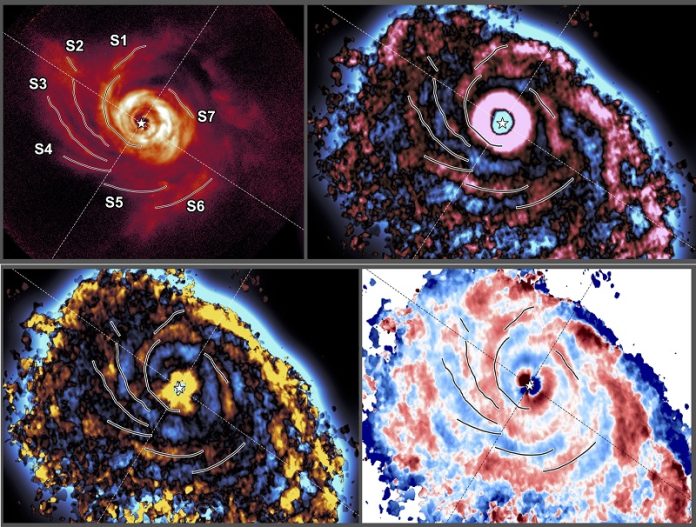
A team of international astronomers has made an exciting discovery about how planets form, thanks to new observations from the Atacama Large Millimeter/submillimeter Array (ALMA).
Traditionally, planets were thought to form over millions of years in a slow process called “bottom-up,” where tiny particles like dust come together to eventually build planets.
However, new research led by Jessica Speedie, a PhD student at the University of Victoria in Canada, offers evidence for a faster “top-down” process.
In this method, planets form when parts of a disk of gas and dust around a star collapse due to gravitational instability.
The astronomers studied a well-known protoplanetary disk around the star AB Aurigae, located about 500 light-years away.
This star is roughly 2.4 times more massive than the Sun and is around 4 million years old.
The disk surrounding AB Aurigae has several spiral arms, where planets are thought to be forming. In fact, previous studies have already identified a developing planet in this disk that is nine times bigger than Jupiter.
Using ALMA’s powerful radio telescopes, Speedie and her team measured the movement of gas within the disk, specifically focusing on two gases, 13CO and C18O.
They discovered a distinctive “wiggle” in the gas’s velocity, which is a hallmark of gravitational instability.
This wiggle suggests that the gas in the spiral arms of the disk is being pulled together by gravity, potentially leading to the rapid formation of planets.
Assistant Professor Cassandra Hall, a co-author of the study from the University of Georgia, explained that these wiggles were predicted by simulations done in 2020.
The wiggles represent changes in the speed of the gas due to variations in density and gravity within the disk. Hall said, “It was clear, it was testable, and it was a bit scary – if we didn’t find it, then something had to be very, very wrong with our understanding of these disks.”
The team was able to use ALMA’s data to create a 3D model of the disk, showing how the gas moves and confirming the gravitational instability. Cristiano Longarini, a co-author from the University of Cambridge, added that this discovery provides direct evidence of the “top-down” planet formation process.
Speedie summed up the significance of the study: “Our detection of gravitational instability in the disk around AB Aurigae is a direct observational confirmation of this ‘top-down’ pathway to planet formation.”
This research, published in the journal Nature, marks a major step forward in understanding how planets are born and highlights the incredible capabilities of the ALMA observatory.
By providing new insights into planet formation, the team hopes to unlock more mysteries of the universe in the future.
Source: KSR



